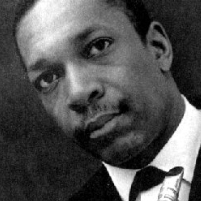11 Most Endangered Historic Places in the U.S.
Friday, June 17, 2011
 John Coltrane
John Coltrane
From natural settings to man-made structures, nearly a dozen historic locations in the U.S. are threatened with being lost forever, according to the National Trust for Historic Preservation.
Included on the list is Bear Butte in South Dakota. The 4,426-foot mountain, called Mato Paha by the Lakota Indians, is sacred ground for as many as 17 tribes. It is threatened by proposed wind farms and oil drilling.
Belmead-on-the-James in Powhatan, Virginia, is a little-known landmark of African-American heritage consisting of gothic style architecture. The buildings went from being a slave-holding plantation to a pair of innovative schools for blacks and Indians. They now sit unused, since the 1970s, and are badly in need of repairs.
Greater Chaco Landscape in northwestern New Mexico holds hundreds of Native American archaeological and cultural sites. These sites and the prehistoric roads connecting them are in jeopardy due to nearby oil and gas exploration and extraction on federal lands north of the Chaco Culture National Historical Park.
In Dix Hills, on Long Island, New York, sits the former home of jazz saxophone legend John Coltrane, who lived there until his death in 1967. A local group is struggling to raise money to restore the house.
The other sites are: China Alley, a 19th century Chinatown in Hanford, California: Civil War-era Fort Gaines on Dauphin Island, Alabama; the 214-year-old 400-acre Isaac Manchester Farm in Avella, Pennsylvania, which is threatened by longwall coal mining that can cause the ground above to sink; the National Soldiers Home Historic District in Milwaukee; the 1881-built Pillsbury A Mill in Minneapolis; Chicago’s old (1975) Prentice Women’s Hospital; and the entire city of Charleston, South Carolina.
-Noel Brinkerhoff, David Wallechinsky
Let These Not Be Lost: America’s 2011 Most Endangered Historic Places (National Trust for Historic Preservation)
- Top Stories
- Unusual News
- Where is the Money Going?
- Controversies
- U.S. and the World
- Appointments and Resignations
- Latest News
- Trump to Stop Deportations If…
- Trump Denounces World Series
- What If China Invaded the United States?
- Donald Trump Has a Mental Health Problem and It Has a Name
- Trump Goes on Renaming Frenzy






Comments